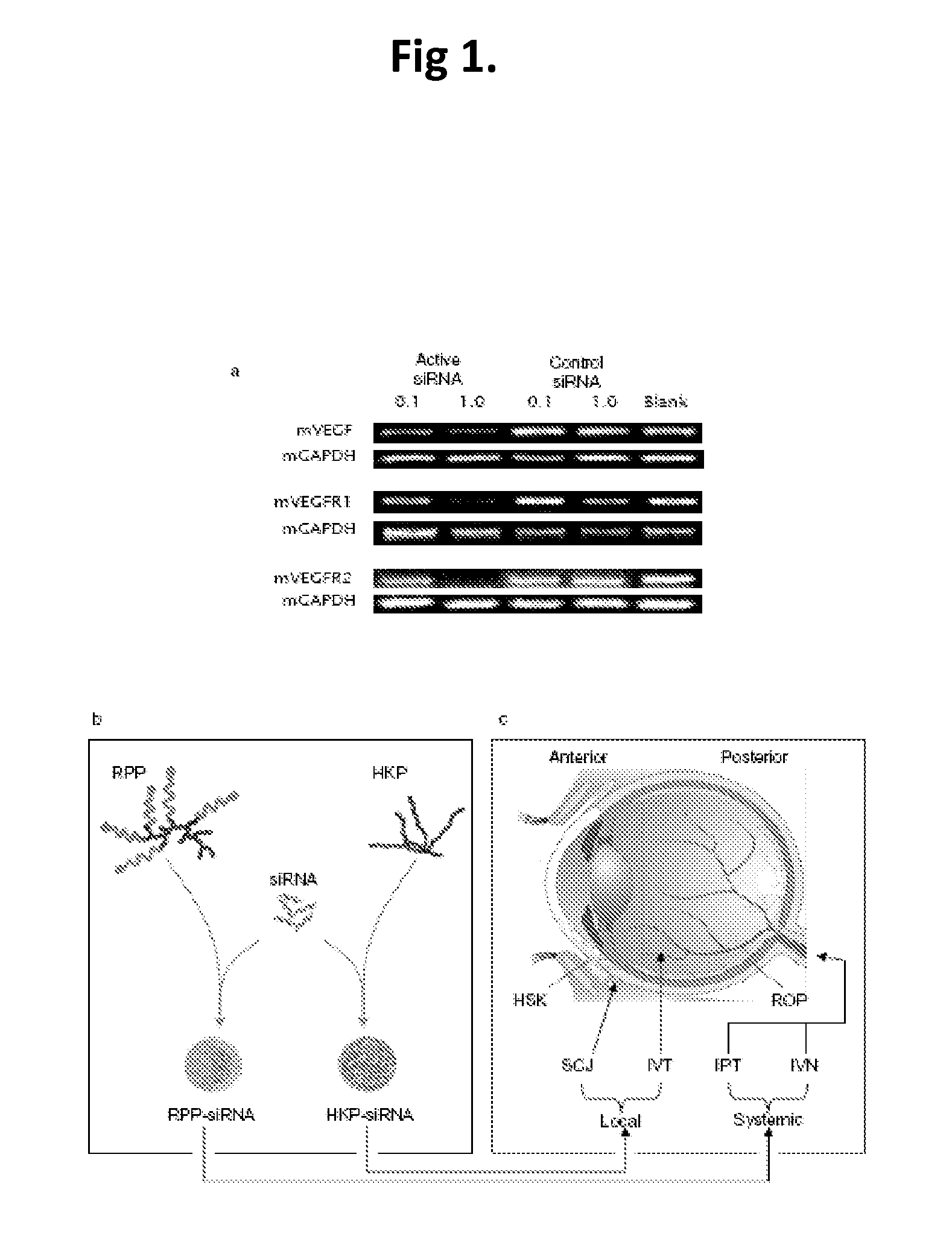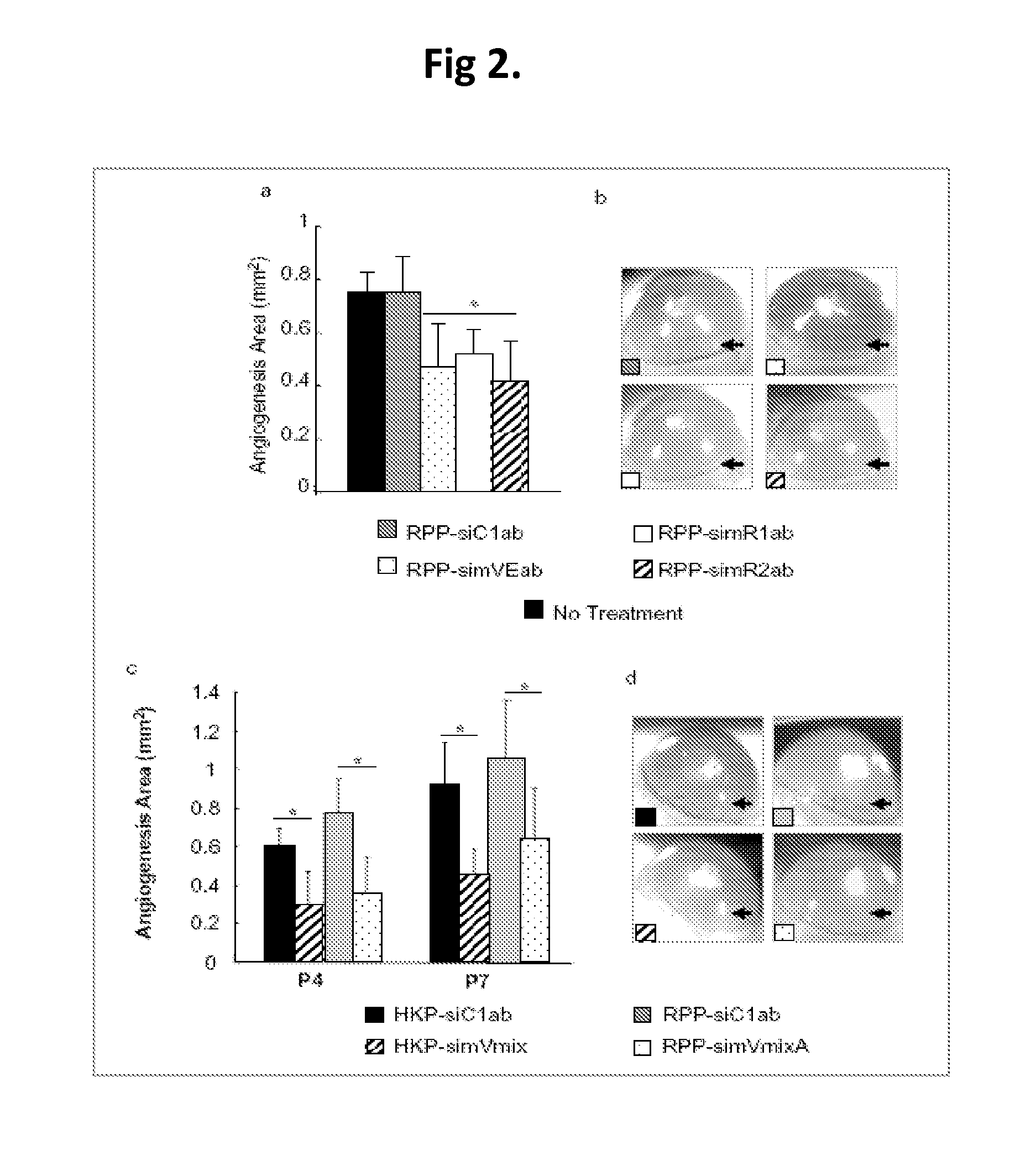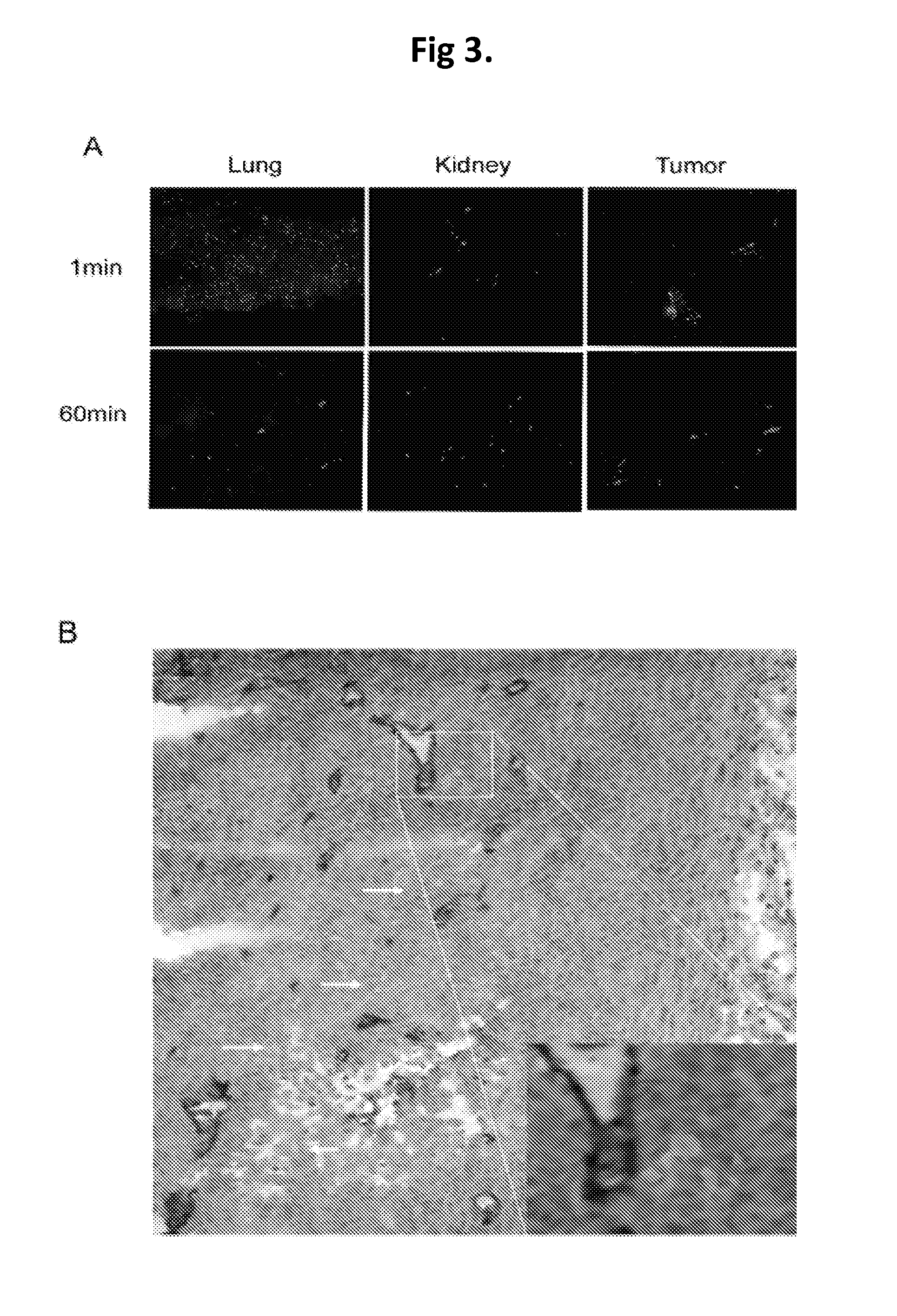Compositions and methods using siRNA molecules and siRNA cocktails for the treatment of breast cancer
a technology of sirna and sirna cocktail, which is applied in the field of small interfering rna molecules for the treatment of breast cancer, can solve the problems of affecting the survival rate of any treatment, the resistance to all forms of endocrine therapy remains a major problem, and the correlation with poor prognosis, etc., to achieve the effects of promoting tumorigenesis, angiogenesis, cell proliferation and tumorigenesis
- Summary
- Abstract
- Description
- Claims
- Application Information
AI Technical Summary
Benefits of technology
Problems solved by technology
Method used
Image
Examples
example 1
Use siRNA as Therapeutics to Treat Angiogenic Diseases such as Cancer and Ocular Neovascularization Diseases
[0105]We have evaluated the anti-angiogenic efficacy of an siRNA cocktail targeted to VEGF pathway genes using a murine Herpetic Stromal Keratitis (HSK) model. The results of the study demonstrated our success of selection of effective siRNA sequences for the VEGF targets. In other work with local and systemic administrations of nanoparticle-siRNA in inhibition of anti-angiogenic activity, our research data also showed that the siRNA cocktail targeted to three genes is much more potent than a single siRNA species targeted to only one gene. In other work, we further demonstrated that Histidine-Lysine Polymers (HKP) can greatly enhance the therapeutic efficacy of the siRNA in the animal disease models. Thus, we select vehicles, including but not limited to HKP, to deliver the formulated multi-targeted siRNA cocktail targeted to EGFR, Raf-1 and mTOR simultaneously. Our preliminar...
example 2
Selection of Potent SiRNA Duplexes and Nanoparticle Formulations
[0107]The following figures demonstrated the identification of potent siRNA duplexes targeting each of the genes.
[0108]In FIG. 1, RT-PCR analyses for mRNA levels of mVEGF, mVEGFR1 and mVEGFR2 after treatment of nanoparticle containing potent SiRNA duplexes. All nanoparticle-containing potent SiRNA duplexes demonstrated their potent activities to knockdown their targeted genes, compared to the control siRNA duplexes, siC1ab in FIG. 1(a). Formations of two different types of polymeric siRNA nanoparticles are shown in FIG. 1(b). In short, HKP-siRNA particles can be formed when HKP aqueous solution is mixed with siRNA solution, and so does the RPP-siRNA particles. Local and systemic administrations of siRNA nanoparticles are illustrated in FIG. 1(c). In short, HKP-siRNA particles were mainly for local deliveries through either subconjunctival (SCJ) or intravitreous (IVT) route. RPP-siRNA particles were applied for systemic ...
example 3
Cocktail siRNA Exhibited Stronger Anti-Angiogenesis Activity
[0109]In the experiment shown in FIG. 2, systemically delivered RPP-simVEab, -simR1ab and -simR2ab nanoparticles (40 μg / 100 μl / eye) containing specific siRNA duplexes significantly minimized angiogenesis areas in mouse eyes compared to the no treatment and siC lab treated groups. In another experiment, treatment of cocktail siRNA nanoparticles, HKP-simVmix (4 μg / 2 μl / eye) through SJV injection and RPP-simVmix (40 μg / 100 μl / eye) through IVN injection resulted in stronger anti-angiogenesis activities in the HSK models, at both P4 and P7, through either local or systemic delivery.
PUM
| Property | Measurement | Unit |
|---|---|---|
| diameter | aaaaa | aaaaa |
| diameter | aaaaa | aaaaa |
| volume | aaaaa | aaaaa |
Abstract
Description
Claims
Application Information
 Login to View More
Login to View More - R&D
- Intellectual Property
- Life Sciences
- Materials
- Tech Scout
- Unparalleled Data Quality
- Higher Quality Content
- 60% Fewer Hallucinations
Browse by: Latest US Patents, China's latest patents, Technical Efficacy Thesaurus, Application Domain, Technology Topic, Popular Technical Reports.
© 2025 PatSnap. All rights reserved.Legal|Privacy policy|Modern Slavery Act Transparency Statement|Sitemap|About US| Contact US: help@patsnap.com



